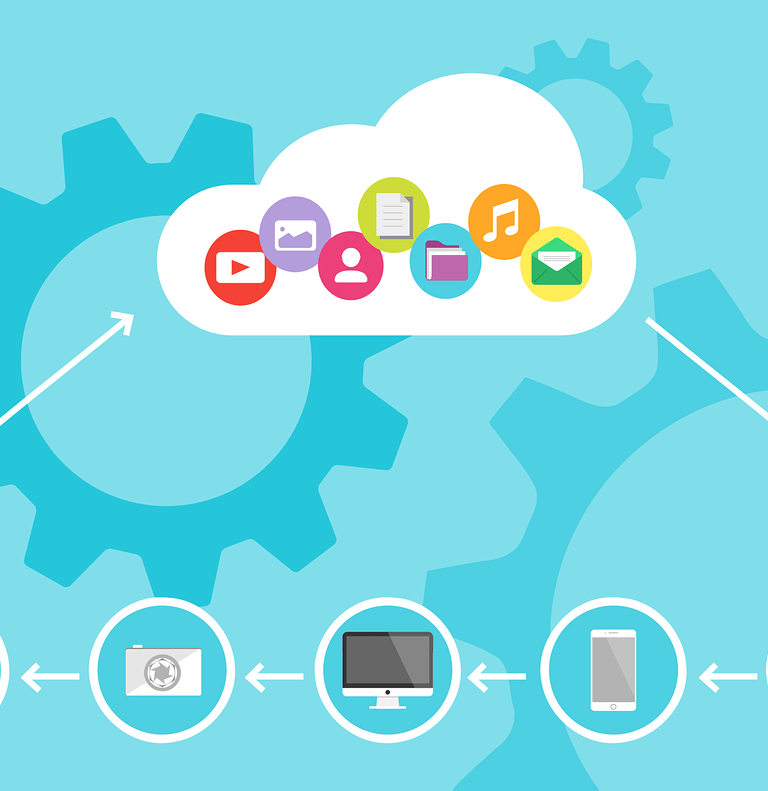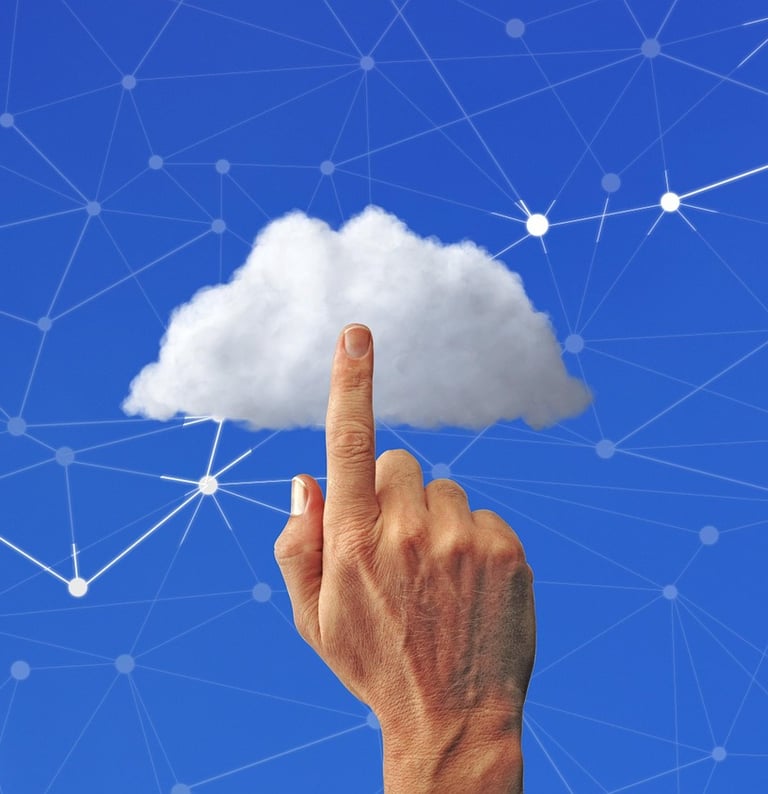Add your promotional text...
Unit I Introduction to Data Communications
Minor Course offered by BOS in Electronics Science for all UG Programs under Faculty of Science & Technology ES – 241 - MN: Data Communications (2024 Pattern)
N ELECTRONICS
Asst. Prof. G. A. Darandale ( GD Sir)
7/23/20259 min read
🧠 Editor's Thought:
This unit lays the foundation of how modern communication systems work. It connects technical knowledge with real-world applications, showing why understanding data communication is essential for anyone entering computer science, electronics, or networking fields.


📘 1.1 Data Communications: Definition and Fundamental Concepts
Definition: Data communication is the exchange of data (sending & receiving) between devices over a communication channel.
Mediums:
Wired: Copper wires, optical fibers, computer buses.
Wireless: Radio waves, microwaves, infrared, etc.
Signals: Data is converted into electromagnetic signals (e.g., electrical voltage, light, or radio signals) to transmit.
Forms of data: Pure digital signals or digitized analog signals (e.g., phone calls via PCM).
Purpose: Enables devices to interact and share information (e.g., internet, texting).
Scope: Not limited to computer networks; includes any system where information is transferred.
Importance of medium & signal: Affects communication speed and reliability.
Foundation: Based on physics and engineering of physical layers.
📘 1.1.2 Historical Evolution
Ancient methods: Smoke signals, drums, flags, mirrors.
19th Century: Telegraph (Morse code), Telephone (voice).
Key Innovators (1960s):
Paul Baran: Distributed message switching.
Donald Davies: Invented packet switching.
Technological Milestones:
Modems (1940s), Barker Code (1952), RS-232 (1969).
PCM (1962) for digitizing voice over single cable.
LAN adapters (1964), USB (1996), Wi-Fi access points (1997).
Trends:
Shift from analog to digital, circuit to packet switching.
Logical communication > Physical connection.
Emphasis on resource sharing and network resilience.


📘 1.1.3 Components of a Data Communication System
Message:
Data to be communicated (text, image, audio, etc.).
May include headers/footers for control.
Sender:
Originator of message (computer, phone, camera).
Converts message into transmittable signals.
Receiver:
Final destination of message.
Converts signals back to readable data.
Transmission Medium:
Pathway for message (wired: copper, fiber; wireless: radio, IR).
Selection depends on speed, cost, distance, environment.
Protocol:
Rules for transmission and reception.
Handles data formatting, error detection, addressing, etc.
Ensures both sender and receiver understand data correctly.
Interdependency: All 5 components must work together for effective communication.
Protocols: Act as the “language” governing how devices communicate and correct errors.


📘 1.2 Characteristics of Data Communication
Data communication is assessed based on four key characteristics:
✅ 1. Delivery
Meaning: Data must reach the correct, intended recipient only.
Purpose: Ensures correct routing and prevents unauthorized access.
Example: Email sent to the right contact; online banking transaction.
✅ 2. Accuracy
Meaning: Data must be delivered without any alteration or error.
Importance: Corrupted data is useless; essential for data integrity.
Example: Medical reports, database updates, important file transfers.
✅ 3. Timeliness
Meaning: Data must arrive within a required time window.
Why Important: Especially vital for real-time applications.
Example: Live video calls, online gaming, real-time sensors.
✅ 4. Jitter
Meaning: Variation in packet arrival time; causes uneven delays.
Effect: Affects quality of audio/video, even if delivery is accurate.
Example: Choppy video, unclear audio in voice or video calls.


📘 1.3 Data Representation
🔹 Core Concept
All types of data (text, numbers, images, audio, video) must be converted to binary (0s and 1s) for computers and networks to process and transmit them.
This binary form is achieved through encoding and often compression.
The network transmits bits without needing to know the content (called data agnosticism at the transport layer).
✅ 1.3.1 Text
Represented using character encoding systems.
ASCII: 7 or 8 bits per character (used for English).
Unicode:
Supports multiple languages/scripts.
Common forms: UTF-8, UTF-16 (variable-length encoding).
✅ 1.3.2 Numbers
Stored as binary using:
Integer representation for whole numbers.
Floating-point representation for real numbers (decimals).
Follows IEEE standards for compatibility across systems.
✅ 1.3.3 Images
Stored as pixels (picture elements) arranged in a grid.
Each pixel has a binary value to represent:
Color images: RGB (Red, Green, Blue) values.
B/W images: simpler binary representation.
Compression techniques reduce file size (e.g., JPEG).
Common formats: BMP, JPEG, PNG.
✅ 1.3.4 Audio
Analog audio is converted to digital by sampling sound waves.
Each sample is stored as binary data.
Formats:
WAV (uncompressed).
MP3 (compressed with minimal quality loss).
✅ 1.3.5 Video
Combination of:
Image frames shown in rapid sequence (visual).
Audio data (sound).
Requires efficient encoding and compression.
Popular formats: MP4, AVI.
📘 1.4 Types of Data Flow (Transmission Modes)
🔹 Definition
Data flow (Transmission Mode): Refers to how data moves between devices — the direction and timing of data transmission.
Modes: Simplex, Half-Duplex, Full-Duplex — arranged in increasing order of interactivity and efficiency.
✅ 1.4.1 Simplex
Data Direction: One-way only (Unidirectional).
Sender → Receiver only; no return path.
No feedback or response possible.
Entire bandwidth used by the sender.
Examples:
TV and radio broadcasting.
Keyboard input, monitor output.
TV remote, scanner.
🧠 Analogy: A one-way street.
✅ 1.4.2 Half-Duplex
Data Direction: Two-way, but only one direction at a time.
Devices can both send and receive — but not simultaneously.
Requires line turnaround time to switch direction.
Suitable for alternating communication.
Examples:
Walkie-talkies, CB radios.
Railway track (only one train at a time).
Older hubs and network cards (NICs).
🧠 Analogy: One-lane bridge used by one vehicle at a time.
✅ 1.4.3 Full-Duplex
Data Direction: Simultaneous two-way communication.
Sender and receiver can send and receive at the same time.
Communication channel is divided into two parts (send & receive).
Best performance among all modes.
Examples:
Telephones, mobile phones.
Network switches, modern NICs (with auto-sensing).
🧠 Analogy: Two-lane road for simultaneous traffic.
📘 1.5 Computer Networks Applications
🔹 Core Concept
Computer networks are essential utilities—used across business, home, and mobile environments.
Networks enable everything from communication and data sharing to e-commerce, entertainment, and smart devices.
Continuous connectivity is now a necessity, not a luxury.
✅ 1.5.1 Business Applications
Resource Sharing: Share printers, software, etc., to reduce costs.
High Reliability: Data backup across multiple systems ensures continuity.
Employee Communication:
Email, video conferencing, desktop sharing.
Supports remote and collaborative work.
Cost Savings: Centralized servers (client-server model) reduce IT costs.
E-commerce: Online sales, transactions, supply chains depend on networks.
Information Access: Easy access to global data via the Web.
Scalability: Businesses can expand resources easily over the network.
Large Computations: Use remote computing power (e.g., supercomputers).
✅ 1.5.2 Home Applications
Remote Information Access: Web browsing, news, research.
Personal Communication: Email, video chat with family/friends.
Interactive Entertainment: Streaming (audio/video), online gaming.
Home Shopping: Online buying and e-commerce from home.
Smart Homes:
Devices (lights, security, appliances) communicate and automate tasks.
Also called ubiquitous computing.
Resource Sharing: Share internet, printers, storage among family.
✅ 1.5.3 Mobile User Applications
Communication & Media Access:
Email, music, video, mobile apps.
Internet Connectivity: Web browsing, cloud services, social media.
Location-Based Services: Maps, GPS, nearby search.
Evolving Protocols:
Improved mobile communication (e.g., Wireless Access Protocol - WAP).
📘 1.6 Network Communication Methods
🔹 Overview
Two main methods:
✅ Broadcast – One-to-many
✅ Point-to-Point – One-to-oneCore trade-off:
🔄 Efficiency vs. Security & ScalabilityModern networks often combine both in a hierarchical design (e.g., LAN + WAN).
✅ 1.6.1 Broadcast Networks
📌 Definition:
A single message is visible to all nodes within the same network segment.
🔑 Key Features:
Visibility to All: Every node can see broadcast messages.
🔒 Raises privacy and security concerns.
ARP (Address Resolution Protocol):
Used in Ethernet to map IP address to MAC address via broadcast.
Broadcast & Multicast:
Broadcast: Sent to all nodes.
Multicast: Sent to selected group of nodes.
Example:
Ethernet: Most common broadcast network (used in LANs).
✔️ Usefulness:
Ideal for local discovery and small networks.
Supports automatic detection of other devices.
✅ 1.6.2 Point-to-Point Networks
📌 Definition:
A dedicated communication link between exactly two devices.
🔑 Key Features:
Dedicated Link: Private and reliable channel between two endpoints.
No Broadcasting: Data only travels to the other end — no eavesdropping.
Better Security: Private link improves confidentiality.
Poor Scalability:
Connecting many devices = many individual links → costly & complex.
Point-to-Multipoint (Hybrid):
Multiple devices connected under same ID, but no full broadcast.
Used in sysplex environments (e.g., mainframes).
📘 1.7 Network Topologies
🔹 Definition
Network topology refers to the arrangement of devices (nodes) and cables in a network—physically or logically.
🔑 Key Considerations:
Cost 💰
Reliability ⚙️
Performance ⚡
Scalability ⬆️
📌 No topology is perfect. Designers choose based on the network’s needs and constraints.
✅ 1.7.1 Bus Topology
🟦 Structure: All devices connect to a single central cable (backbone).
✅ Advantages:
Simple & low cost 🛠️
Requires less cable
Easy to add new devices
❌ Disadvantages:
Single point of failure: If backbone fails, entire network fails
Difficult troubleshooting 🔍
Performance drops with more devices
Signal reflection if cable ends not terminated
Usually half-duplex (data flows in one direction at a time)
🖥️ Use Cases: Small LANs, simple home or office setups
✅ 1.7.2 Star Topology
🟦 Structure: All devices connect to a central hub or switch.
✅ Advantages:
Node failure doesn’t affect rest of network
Easy to add/remove devices
Simple to manage & troubleshoot
Centralized monitoring
❌ Disadvantages:
Central hub = single point of failure
More cabling = higher cost 💸
Bottleneck risk at hub
🖥️ Use Cases: Home networks, small/medium office setups
✅ 1.7.3 Ring Topology
🟦 Structure: Devices form a closed loop, each connected to two neighbors.
✅ Advantages:
No data collisions
Predictable performance even with traffic
Doesn’t need a hub
Cost-effective setup
Dual rings add redundancy
❌ Disadvantages:
Any break = total failure of network
Slower than Ethernet
Difficult fault diagnosis
Not easily scalable
🖥️ Use Cases: LANs with sequential communication needs
✅ 1.7.4 Mesh Topology
🟦 Structure: Every node connects to every other node directly.
✅ Advantages:
Very high reliability ✅
No single point of failure
Strong security 🔒
Excellent for mission-critical systems
❌ Disadvantages:
Very expensive 💰
Complex setup and management 🧠
Lots of cables required
🖥️ Use Cases: WANs, military or industrial networks needing high fault tolerance
🌳 1.7.5 Tree Topology (Hybrid)
Combines Star + Bus
Common in large organizations
Balances scalability, cost, and manageability
📘 1.8 Network Types
Networks are classified based on geographical area, technology used, and purpose.
They help us understand how data moves from small local areas to the global Internet.
🧱 Classification of Networks
✅ 1.8.1 Local Area Network (LAN)
📍 Area: Small (home, office, school)
🔌 Wired or wireless
🖥️ Example: Office computers connected to a printer
✅ Features:
High speed within short distance
Often managed by a central server
Resource sharing (files, printers)
✅ 1.8.2 Metropolitan Area Network (MAN)
📍 Area: City-wide (5–50 km)
🏢 Connects buildings or offices across a city
✅ Features:
Larger than LAN, smaller than WAN
Technologies: FDDI, CDDI, ATM
Often used by ISPs or universities
✅ 1.8.3 Wide Area Network (WAN)
📍 Area: Country or world-wide (50+ km)
🌍 Connects LANs over the globe
✅ Features:
Internet is the largest WAN
Slower than LAN/MAN
Uses routers, satellites, and fiber links
✅ Examples:
Internet
Bank branch networks across countries
✅ 1.8.4 Wireless LAN (WLAN)
📶 LAN without wires – uses Wi-Fi
🧩 Same range as LAN but without physical cabling
✅ Features:
Mobile and convenient
Security needed (WPA2/WPA3 encryption)
Devices: laptops, phones, IoT gadgets
✅ 1.8.5 Home Network
🏠 A type of LAN set up in a residence
✅ Features:
Connects TVs, smartphones, laptops, IoT
Allows file sharing, internet access, streaming
Usually managed by a router provided by ISPs
✅ 1.8.6 Internetwork
🔗 Interconnection of multiple networks (LAN + WAN etc.)
🌐 Core idea behind the Internet
✅ Devices used:
Routers, Gateways
🔄 Types of Internetworks:
🔹 Intranet
Private network within an organization
Only accessible to internal staff
E.g., school portal, office HR system
🔹 Extranet
Controlled access to outsiders (vendors, clients)
E.g., supplier order portal, project dashboard
🔁 Hierarchical Structure of Networks
Home Device → LAN → Router → WAN (Internet)
📘 1.9 Protocols and Standards
✅ 1.9.1 What is a Protocol?
🔹 Definition:
A protocol is a set of rules that defines how data is sent, received, and understood between devices in a network.
🧠 Why it matters:
Devices from different companies (e.g., HP printer + Dell laptop) can communicate smoothly.
Think of it as a common language between different systems.
📌 Key Features:
Protocols handle:
Error control
Data compression
Addressing
Protocols work together as a protocol suite (like TCP/IP).
Enable interoperability, even if devices are built differently.
Follow a layered architecture (like OSI Model):
Each layer has a specific job (e.g., routing, encryption).
💡 Real-life example:
Using WhatsApp:
You send a message (data).
It follows rules (protocols) to reach your friend's phone correctly and securely.
✅ 1.9.2 Protocol Standards – De Facto vs. De Jure
🔹 Definition:
Protocols become standards to ensure compatibility across all systems and devices.
✅ 1.9.3 Role of RFCs (Requests for Comments)
🔹 What are RFCs?
RFCs are official documents published by the IETF.
They define and document internet standards and protocols.
📌 Why RFCs Matter:
Act like blueprints for building the Internet.
Ensure global compatibility.
Examples of protocols defined in RFCs: TCP, IP, HTTP, TLS, DNS.
🔑 Key Features:
📖 Public – Free to download and read.
🧱 Authoritative – Trusted by developers and hardware vendors.
🔁 Immutable – Once published, not changed. New versions = new RFC numbers.
🧮 Sequential Numbering – Started from RFC 1 (1969), now over 9000!
✅ Conclusion: Unit I – Introduction to Data Communications
Data communication is the process of transferring digital information between devices using various media (like cables, wireless).
It evolved from basic signaling methods (like smoke or telegraphs) to modern packet-switched digital networks, aiming for higher speed, reliability, and flexibility.
🔹 Key Takeaways:
Digital Foundation:
All data (text, image, audio, video) is represented in binary (0s and 1s) for transmission and processing.
This makes networks device-independent and versatile.
Data Flow Types:
Simplex, Half-Duplex, and Full-Duplex show a move toward more interactive and efficient communication.
Full-duplex (like phone calls) is now the norm in modern systems.
Importance of Networks:
Used everywhere: businesses, homes, mobiles, cloud.
Must be secure, reliable, and fast for daily needs.
Communication Methods:
Broadcast: Sends to all (efficient but less secure).
Point-to-Point: Private and secure (used in large-scale backbones).
Most real-world networks use a hybrid of both.
Network Topologies:
Bus, Star, Ring, Mesh – Each suits different needs.
Design depends on cost, performance, and fault tolerance.
Protocols & Standards:
Protocols = Rules for data exchange.
Standards = Ensure devices work together.
De Facto (popular use) vs. De Jure (officially approved).
RFCs (Requests for Comments):
Published by IETF.
Define the official internet protocols like IP, TCP, HTTP.
Open, public, and central to internet development.


